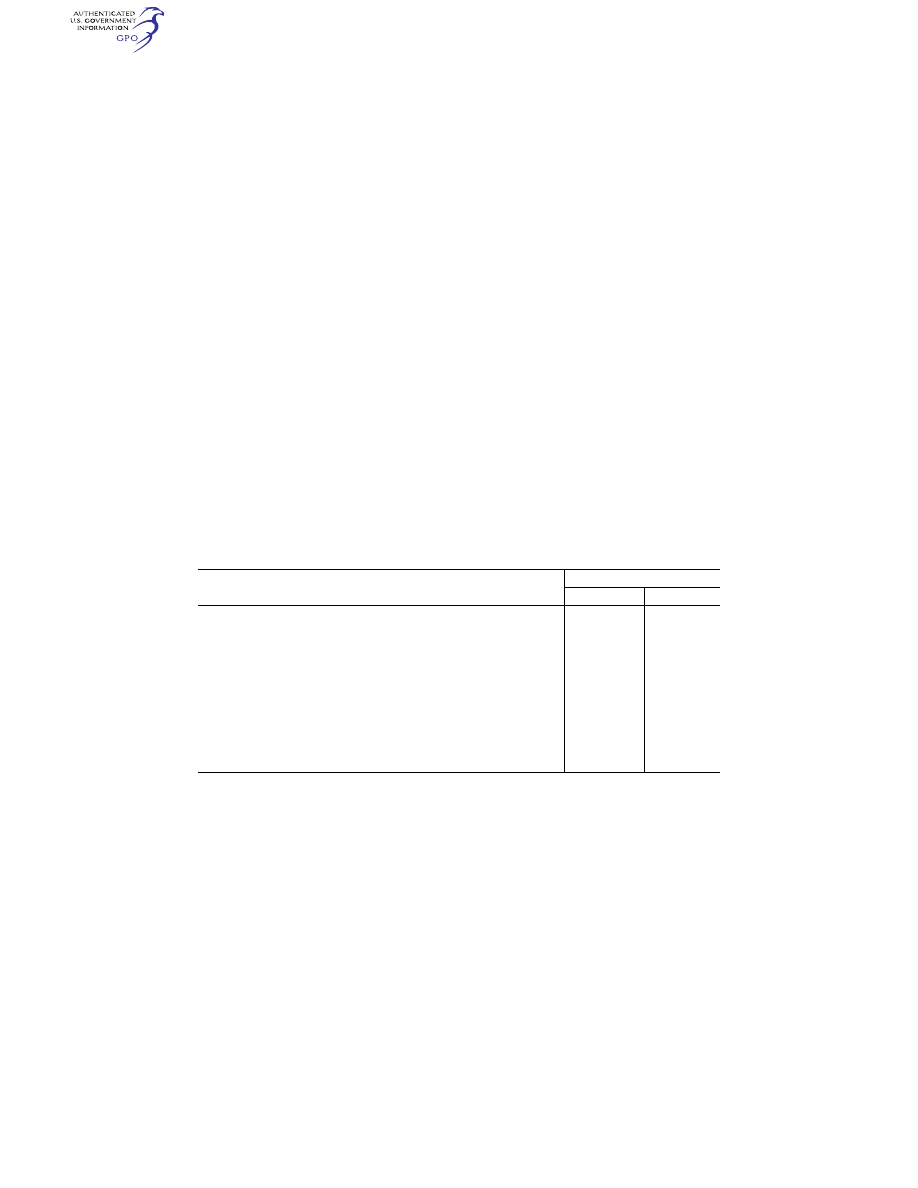
872
49 CFR Ch. I (10–1–23 Edition)
§ 175.702
Associate Administrator determines
that it is designed to assure that:
(1) The packages can be placed in
each predesignated area in accordance
with the minimum separation dis-
tances prescribed in paragraph (a) of
this section; and
(2) The predesignated areas are sepa-
rated from each other by minimum dis-
tance equal to at least four times the
distances required by paragraphs (a)
and (b) of this section for the
predesignated area containing pack-
ages with the largest sum of transport
indexes.
§ 175.702
Separation distance require-
ments for packages containing
Class 7 (radioactive) materials in
cargo aircraft.
(a) No person may carry in a cargo
aircraft any package required by
§ 172.403 of this subchapter to be labeled
Radioactive Yellow–II or Radioactive
Yellow–III unless:
(1) The total transport index for all
packages does not exceed 50.0 and the
packages are carried in accordance
with § 175.701(a); or
(2) The total transport index for all
packages exceeds 50.0; and
(i) The separation distance between
the surfaces of the radioactive mate-
rials packages, overpacks or freight
containers and any space occupied by
live animals is at least 0.5 m (20 inches)
for journeys not exceeding 24 hours and
at least 1.0 m (39 inches) for journeys
longer than 24 hours; and
(ii) The minimum separation dis-
tances between the radioactive mate-
rial and any areas occupied by persons
that are specified in the following table
are maintained:
Transport index or sum of transport indexes of all packages in the aircraft or
predesignated area
Minimum separation distances
Centimeters
Inches
50.1 to 60.0 ...........................................................................................................................
465
183
60.1 to 70.0 ...........................................................................................................................
505
199
70.1 to 80.0 ...........................................................................................................................
545
215
80.1 to 90.0 ...........................................................................................................................
580
228
90.1 to 100.0 .........................................................................................................................
610
240
100.1 to 110.0 .......................................................................................................................
645
254
110.1 to 120.0 .......................................................................................................................
670
264
120.1 to 130.0 .......................................................................................................................
700
276
130.1 to 140.0 .......................................................................................................................
730
287
140.1 to 150.0 .......................................................................................................................
755
297
150.1 to 160.0 .......................................................................................................................
780
307
160.1 to 170.0 .......................................................................................................................
805
317
170.1 to 180.0 .......................................................................................................................
830
327
180.1 to 190.0 .......................................................................................................................
855
337
190.1 to 200.0 .......................................................................................................................
875
344
(b) In addition to the limits on com-
bined criticality safety indexes stated
in § 175.700(b),
(1) The criticality safety index of any
single group of packages must not ex-
ceed 50.0 (as used in this section, the
term ‘‘group of packages’’ means pack-
ages that are separated from each
other in an aircraft by a distance of 6
m (20 feet) or less); and
(2) Each group of packages must be
separated from every other group in
the aircraft by not less than 6 m (20
feet), measured from the outer surface
of each group.
[71 FR 14604, Mar. 22, 2006, as amended at 71
FR 54396, Sept. 14, 2006; 77 FR 60943, Oct. 5,
2012; 79 FR 40618, July 11, 2014]
§ 175.703
Other special requirements
for the acceptance and carriage of
packages containing Class 7 mate-
rials.
(a) No person may accept for carriage
in an aircraft packages of Class 7 mate-
rials, other than limited quantities,
contained in a rigid or non-rigid over-
pack, including a fiberboard box or
plastic bag, unless they have been pre-
pared for shipment in accordance with
§ 172.403(h) of this subchapter.
(b) Each shipment of fissile material
packages must conform to the require-
ments of §§ 173.457 and 173.459 of this
subchapter.
(c) No person shall offer or accept for
transportation, or transport, by air—
